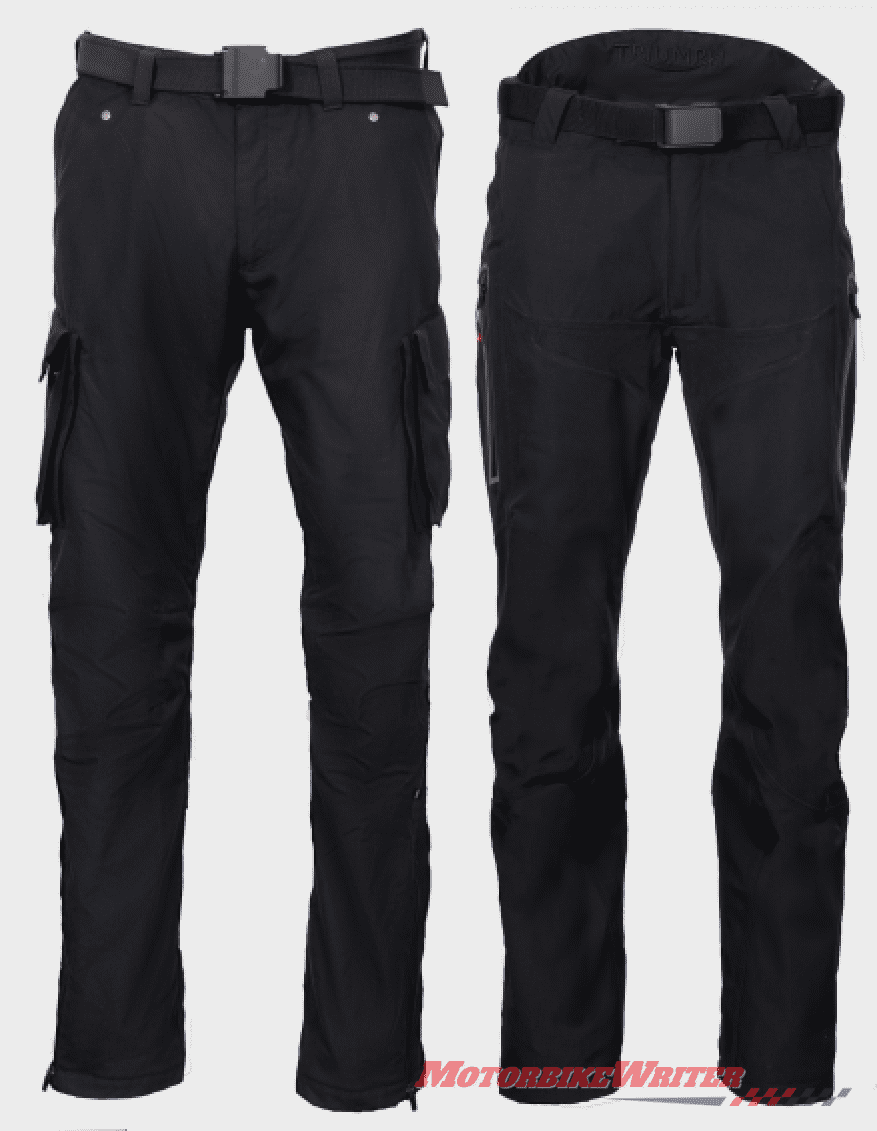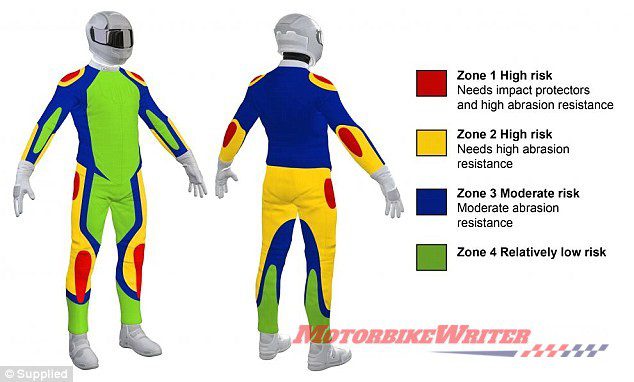With summer just around the corner, riders will be considering riding pants and may be wondering whether traditional double-layer protection is better than the new single-layer materials.
Traditional double-layer jeans and riding pants have a separate layer of protective material, usually Kevlar, and sometimes even a third layer of mesh to “wick” the sweat away and protect against the scratchy material.
More recent double-layer designs have done away with the mesh as the protective layer has become more soft and breathable.
However, double-layer pants can be quite heavy and hot in summer.
Single-layer pants promise to be lighter and cooler. They have the protective fabric woven into the material so there is no need for a separate layer of protection or mesh.
Which is best?
I have tested both types and you can read my reviews by typing “jeans” or “pants” in the search field at the top of this page.
For a more scientific answer, I contacted Dr Chris Hurren, a research scientist at Deakin University in Geelong where he and his laboratory work on protective motorcycle clothing.

He also worked with Dr Liz de Rome and others to produce the protocol that is used by MotoCAP for their testing regime.
Dr Hurren has written a series of four articles for Motorbike Writer on the new European clothing standard which you can start reading by clicking here.
Verdict: Single Vs double layer
This is the unedited verdict from Dr Hurren:
From the testing conducted by MotoCAP on ‘Protective Denim’ products, the best performance has been in multi-layer products where a separate protective liner is present inside the jeans.
The most important part to protect in a pair of pants is the Zone 1 and Zone 2 areas (defined in EN13595-1:2002).
The abrasion time results for each of the abrasion risk areas are reported for each garment in the MotoCAP garment five-page test report.
This table shows the abrasion time in seconds for the protective material in the high-risk zone along with the amount of coverage for that zone of the protective layer.
| Manufacturer | Product | Protective layer abrasion time | Zone 1/2 coverage |
| Multi-layer protection | |||
| RST | T125 Standard Aramid | 1.12 | 70 |
| RST | Vintage | 1.17 | 85 |
| DriRider | Rapid | 1.27 | 100 |
| Rjays | Reinforced Original Cut | 1.34 | 95 |
| PMJ | Rider Jeans | 1.83 | 50 |
| Bull’it | SP120 Lite Heritage Easy | 2.03 | 100 |
| Resurgence | Indigo sport | 2.46 | 100 |
| Triumph | Pure Riding | 2.63 | 100 |
| Bull’it | Covert Blue Straight | 3.64 | 100 |
| Draggin Jeans | Cargo | 3.71 | 100 |
| Triumph | Hero Riding | 3.74 | 100 |
| Rev’it | Lombard | 4.04 | 90 |
| Harley Davidson | Genuine Performance Riding | 4.08 | 100 |
| Bull’it | SR6 Oil Skin 17 Straight | 4.72 | 100 |
| Draggin Jeans | Next Gen Seamless | 7.77 | 100 |
| Draggin Jeans | Twista | 7.86 | 100 |
| Neo Jeans | Kevlar Men’s Stretch | 0.74 | 100 |
| Single-layer protection | |||
| BMW | City Denim Trousers | 0.41 | 100 |
| Levis | 501 Normal Denim Jeans | 0.56 | 100 |
| Resurgence | New Wave | 0.92 | 100 |
| Saint | Model 2 | 1.51 | 100 |
All of the products achieving over two seconds of abrasion time were multi-layer products. Two seconds of abrasion time would equate to approximately 16 metres of sliding distance on chip seal.
The Saint single-layered product performed the best of the single layered products reported on so far.

All three single-layer products fall towards the bottom of the multi-layered product performance levels.
I have also included the test results for a normal pair of Levis 501 non-protective jeans for reference against the single-layer products.
Textile Vs denim
I have done a similar comparison for protective textile pants and the multi-layer products again perform better than the single.
Where the multilayer includes a foam of some type and more than one layer of protective textile, the abrasion times go up. Where a leather patch is used, the abrasion time is also improved.
With almost all protective textile pants, improvement is generally only done in the knee area with the risk in the side of the leg and bottom overlooked. This is not the same for denim.
For the single-layer textile pants, the higher performing times of one-second-plus are generally achieved by 1000+ denier polyester or nylon woven textile. Products around the 600 denier range typically get 0.4-0.6 seconds.
Almost all of the protective denims (single and multi) perform well when compared to protective textile pants.
Comfort
As for the comfort ratings of gear tested by MotoCAP, the term has been changed to “breathability”.
Dr Hurren explains why:
There has been a lot of feedback from riders on the use of the word comfort. The solitary word comfort can mean many different things to different people. Many were misconstruing it with tactile comfort (tightness, fit, flexibility, skin feel) which is of course different for each person and next to impossible to quantify.
Breathability is felt to better reflect the dimension that is measured for MotoCAP. The concept of a breathable membrane in a jacket is well known within the rider community. It is hoped that the adoption of breathability will cause less confusion and will better convey the suitability of a garment for hot weather use.



